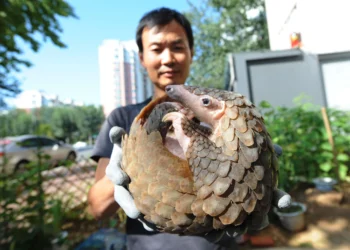Interesting discussions regularly arise between proponents and opponents of raw feeding methods for dogs and cats based on BARF, NRV, or KVV. It is sometimes claimed that feeding raw meat to dogs and cats poses absolutely no risk of infection and disease from Salmonella. Is this really the case or should we be a little more careful?
What is Salmonella?
Salmonella is a gram-negative rod-shaped bacterium that occurs in the normal intestinal flora of poultry, cattle, pigs, reptiles, and pets. They are very resistant and can survive up to two years in organic matter.
Reading suggestions; 200+ Unique Female Cat Names for Your Cute Companion
Salmonella in humans
When we think of Salmonella, most people know that it can make us quite sick ourselves. For example, by eating chicken meat that is not well done or by eating lettuce that has been cut on a cutting board on which the raw meat has been cut beforehand.
People are therefore quite sensitive to infection with Salmonella and can become quite ill from it. The most well-known symptoms in humans are symptoms of vomiting and diarrhea after eating contaminated food.
Salmonella in dogs and cats
That infection and disease by Salmonella in dogs and cats never occurs is absolutely a myth. After all, this bacterium is a normal inhabitant of the large intestine. Various studies have examined how many dogs and cats are healthy carriers of this bacterium. It has been found that the percentage of healthy carriers in dogs varies between 0 and 36% and that in cats it fluctuates between 0 and 20%. Although Salmonella disease is not seen as often in dogs and cats as in humans,
it does occasionally occur in these animals as well. In that case, the disease is mainly caused by non-host-specific Salmonella. Contaminated food usually acts as a source of infection. It is also a myth that the acidic environment of the stomach in the dog or cat would make it completely impossible for a Salmonella germ to survive.
A fat-rich substrate is in fact able to protect the germ during its passage through the stomach. In this way, even low numbers of germs can still enable colonization of the intestines.
After reaching the intestine, the infection proceeds in several stages. The first phase consists of colonization in which the germ attaches to the epithelial cells of the intestine. Whether or not the infection takes hold and leads to clinical disease then depends on several factors. Firstly,
the serotype or strain with which an animal is infected is important and the infection pressure also plays a role. Furthermore, the state of the normal intestinal flora is important. Salmonellosis develops more easily when the intestinal flora is disturbed, for example with long-term antibiotic therapy or fasting.
Reading suggestions; Black Dog Names; 400+ Names for Black Dogs
Age also plays a role. For example, very young animals are usually more sensitive, partly due to the fact that they do not yet have a stable intestinal flora.
In the second phase, the invasion of the gut takes place, damaging the epithelial cells of the gut and attracting inflammatory cells to the gut tissue.
There is then (bloody) diarrhea, vomiting, and abdominal pain. Salmonella germs are taken up by special inflammatory cells, the so-called macrophages. The intention is that the germ is subsequently killed, but the germ can escape this and even multiply in these cells, after which the released germs can infect new cells.
The third phase is also called the systemic phase because the germ has managed to reach the bloodstream at this stage. The complaints are then formed by fever, anorexia, and hyperacute death. The Salmonella germ can also reach other organs via the blood, such as the lungs, joints, bones, liver, and brain.
Most animals do not excrete the germ for more than 1 to 4 months after going through Salmonellosis. However, some dogs and cats can remain germ carriers for life. Under the influence of stress or illness, these animals can again excrete Salmonella germs through the feces.
Whether or not to feed raw meat to dogs and cats?
In theory, dogs and cats can therefore become infected with Salmonella by eating raw meat and become ill. Could this be a reason to conclude that feeding raw meat to your dog or cat is bad? No, luckily it isn’t. Despite the risk of infection, most dogs and cats fed a raw meat diet do not show disease. 
This can probably be explained by the immunity build-up that arises after repeated exposure to Salmonella. In general, dogs and cats that are on a raw diet are in perfect condition and there is no reason at all to make the problem surrounding Salmonella when feeding raw meat bigger than necessary. Of course, the risk cannot be completely ruled out.
Hygiene in connection with the risk of human contamination
Handle the raw food for your dog or cat hygienically. After all, we humans, especially children and the elderly are very sensitive to infection with Salmonella. If you prepare the raw meal for your pet, you should wash your hands and the used material well afterward. In addition, do not leave meat that is not eaten by your dog or cat for too long.
Furthermore, research shows that dogs that eat raw meat excrete more Salmonella germs through the feces. In that case, as a human being, of course, also handle the feces of your pet hygienically. That goes without saying, but a study has shown that 3% of Salmonella infections in humans are caused by contact with the pet.
Reading suggestions; Meat Is The First And Most Important Ingredient In Dog Food
In certain situations, do not give raw meat to your dog or cat
Because very young dogs and cats are susceptible to illness after infection with Salmonella, it is better not to give raw meat to these animals. Also in situations where the animal’s resistance is reduced, such as illness, use of antibiotics, and stress, it is better not to give raw meat as a precaution.









